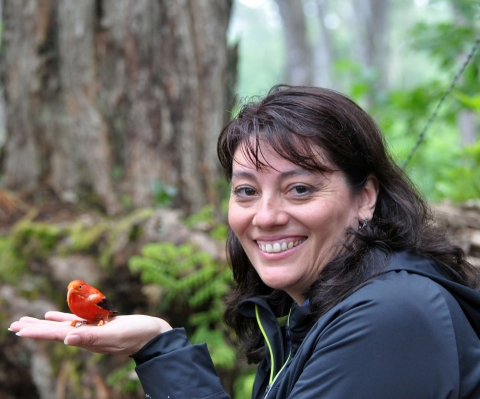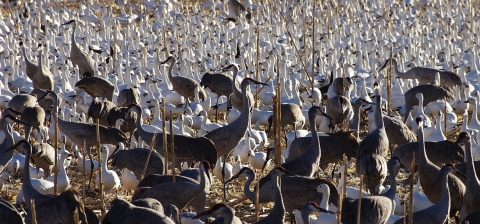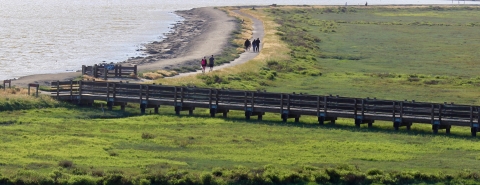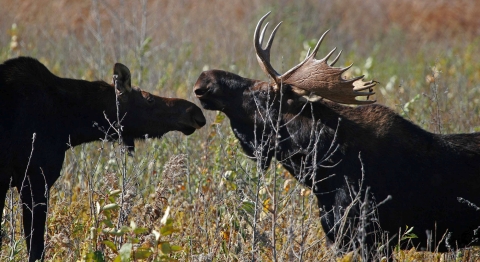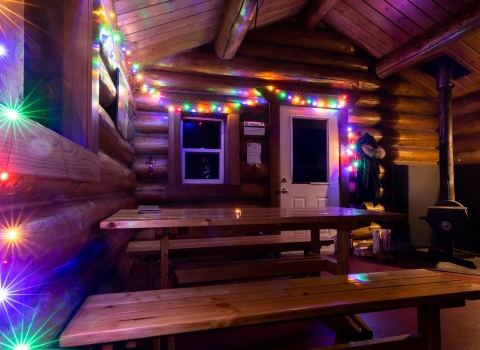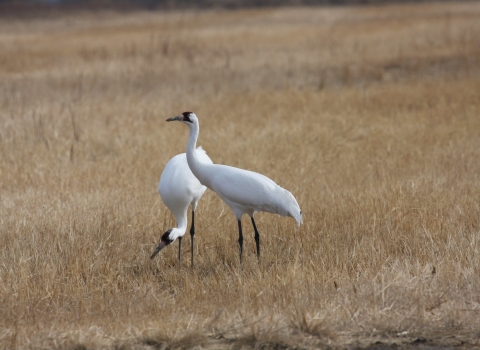Even if you don’t have much interest in seeing wildlife, national wildlife refuges are great places to reconnect with the natural world.
“Some of it is just to experience being outside,” says Cynthia Martinez, chief of the National Wildlife Refuge System. “You have to recognize that I’m from the Southwest. I have to see the sun. I get energy from the sun. I think people get energy from outdoor areas, and I think it’s an opportunity to clear your mind. It’s an opportunity to reflect. And it’s an opportunity to maybe see or experience something that you weren’t expecting. That’s one of the beauties of going to a national wildlife refuge national wildlife refuge
A national wildlife refuge is typically a contiguous area of land and water managed by the U.S. Fish and Wildlife Service for the conservation and, where appropriate, restoration of fish, wildlife and plant resources and their habitats for the benefit of present and future generations of Americans.
Learn more about national wildlife refuge . I think that when people go, they can come back saying, ‘Wow, I didn’t even know . . . fill-in-the-blank.’ But if they had never gone there, they wouldn’t have had that experience.”
If you are interested in increasing the odds that you’ll see native wildlife behaving naturally at a national wildlife refuge, Martinez has two important pieces of advice:
- Factor time of year and time of day into your planning.
- Do a bit of research before you go.
Timing
Time of year is especially important at national wildlife refuges.
“If you go to Bosque del Apache National Wildlife Refuge in New Mexico in the summer, you’re not going to see much,” says Martinez. “If you go in November, you will see a spectacle of wildlife and birds covering every part of that place. There’s a real seasonality to our refuges.”
When planning a visit to a national wildlife refuge, time of year is vital because wildlife behavior patterns are seasonal. Some refuges provide nesting habitat for wildlife. Others provide wintering habitat. Birds, fish and other wildlife move seasonally. Spring and fall migration periods are particularly good times to see birds on the move along the four major flyways of North America: Atlantic, Mississippi, Central and Pacific.
Time of day also matters. The odds of a visitor seeing wildlife increase during the quiet stillness of early morning or early evening. To hunt more easily, to evade predators and/or to avoid midday heat, many animals wait for dawn or dusk to be most active.
As the Kansas Department of Wildlife, Parks and Tourism advises, “Hardly anything else you do will enhance your opportunity to see and hear wildlife more than following the simple PEQ rule: Be patient, early and quiet.”
What Activities Are Available?
“You’ll want to do a little bit of research,” says Martinez. “What does the national wildlife refuge offer?”
You’ll want to find out if the refuge has walking trails, and what kind of trails they are. Easy? Difficult? Hilly? Flat? On a well-defined boardwalk or in remote and rocky location?
What wildlife species are at the refuge? Are photography blinds available? Does the refuge offer paddling, fishing, hunting, bicycling? Does the refuge have a visitor center full of hands-on exhibits, or does it simply have a contact station with basic information? Does the refuge have an auto tour route on which you can glimpse wildlife from your vehicle?
More Ways to Get the Most Out of a Visit
Here are a handful of other tips to make a visit to a national wildlife refuge most enjoyable:
- Dress and prepare for the conditions.
Wear appropriate clothing, sensible shoes, hat, etc. Bring water, sunscreen and, sometimes, insect repellent. - Don’t disturb wildlife.
Ideally, be as stealthy as possible. “If you want to see wildlife in their native places and watch them in their natural behavior,” says Martinez, “then you have to take a bit of a back seat in order to see some pretty amazing things that wildlife do.” For your own safety, keep your distance from wildlife. - Be respectful of the land and waters.
“It’s kind of like walking into somebody’s house,” says Martinez. “Think about it as we humans are entering into a place of wildlife.” - Ask questions.
“Ask the folks in the visitor center or at the visitor contact station: When is the best time to visit a given national wildlife refuge, what would we be able to see, and where would be the best place to see it?” says Martinez. “You have to recognize that, at some places, you might have to spend a bit of time getting off the beaten path to actually see some of that. But sometimes the things that are a little harder to get to can be the most rewarding.” - Use your senses.
Listen, in particular, to nature. Early morning at a national wildlife refuge can be a soothing symphony of songbirds calling, frogs croaking, waterfowl cackling, fish jumping and even vegetation quaking or creaking. Heightening your senses will help you spot or identify wildlife. - Use social media.
Many national wildlife refuges have Facebook or Twitter accounts. To get a sense of the refuge and to see timely announcements regarding the often-changing conditions on refuge lands and waters, follow refuges on social media. - Check ahead to see if the refuge allows pets.
Be aware that pets can intimidate wildlife. - Don’t assume refuges are far away.
Look close to home. More than 100 national wildlife refuges are with 25 miles of urban areas with a population of 250,000 or more.
FIND A NATIONAL WILDLIFE REFUGE NEAR You (search by State or ZIP CODE)


